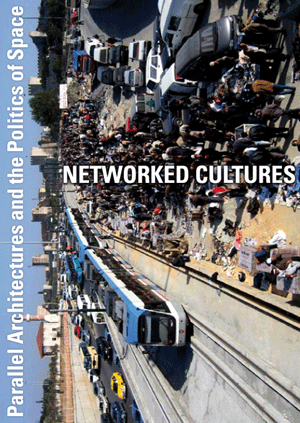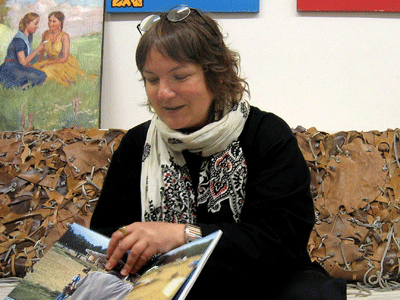_loginregistrieren_database_5 Factories - Worker Control in Venezuela Dario Azzellini & Oliver Ressler _ALMOSTREAL ECF _AnArchitektur Jesko Fezer _Arizona Road Azra Aksamija _Balkan Konsulat rotor _Bata-ville: We are not afraid of the future Nina Pope + Karen Guthrie / www.somewhere.org.uk _Black Benz Race krcf in collaboration with Felix Stalder, Arben Gecaj, Faton Topalli and Osman Osmani _Black Sea Files Ursula Biemann _Camp La Jolla Military ParkOwen Mundy _CHANGE REALITY: Renaming the Streets of Zagreb REINIGUNGSGESELLSCHAFT _Conceptual Paradise. There is a place for sophistication Stefan Roemer _de-regulation Irit Rogoff, Kutlug Ataman, Stefan Roemer_news ____________Bloomberg SPACE, London ____________Kumu Art Museum Tallinn ____________Open Space, Open Systems - Vienna ____________CAA 2011 Conference, New York ____________Forum Stadtpark, Graz ____________Symposium, Istanbul ____________lungomare, Bozen/Bolzano ____________Metropolis Biennale 2007-17, Copenhagen ____________new publication available now ____________Mestna Galerija, Ljubljana ____________Livestream of Networked Cultures documentary ____________ |
_ConversationsOlga Lopoukhova
Olga Lopoukhova
PM/HM: How did it come that you moved into the former garages of the Red October chocolate factory, right in the heart of Moscow, and started running the joint art platform ARTStrelka? Olga Lopoukhova: ARTStrelka appeared on the Moscow scene in a somewhat strange way, as is often the case in Russia. It had to do with private contacts. One day in a restaurant, Vladimir Dubossarsky, a well-known Russian artist, made the acquaintance of the owner of these premises, Artjom Kusnezov, a Moscow oligarch, who is also connected with Guta Bank. They met and had a nice conversation, and it came up that the Red October chocolate factory might have to move, and no one had a clear idea about what to do. Vladimir was oddly attached to the area – ten years earlier he had had his art studio in the neighbourhood. We went to see the grounds for the first time in June 2003. We walked around and saw the yard with all these old garages that were not used regularly. They were really dirty, but we thought it would be interesting to do something in them. So we met and discussed it with the owner of the Red October factory, and he gave his okay. We agreed on a price and it was very low, given the location: the Kremlin, the House of Government, the Cathedral of Christ the Saviour, the Monument for Peter the Great and Tretyakov Gallery are all within a mile or less. The rent was set at the time and has not gone up since: 150 dollars per square metre a year. That’s not bad. For example, even in the south of Moscow, if you want to rent an office building it would be somewhere around 700 dollars. Once the centre and our area have been gentrified, the price per square metre is sure to go up to around 150,000 dollars a year. We decided that we didn’t want the place all to ourselves and invited our friends to join us. We asked people we knew, because we hoped that way to guarantee a certain standard, I mean, we wanted it to be about real art and not salon painting. But we had one demand: there was to be a joint opening on the last Saturday of each month. And now the entire Moscow art scene knows that the last Saturday of the month is ARTStrelka’s. And we’ve also tried to do things outside the garages during the openings as well – performances or other events, especially in the summer, when we also host festivals, present videos and so forth. Red October has enabled us to work here, but they don’t support us financially, nor does the local government or the Ministry of Culture or private sponsors, but we’re still here and in September 2007, we celebrated our three-year anniversary. From the very beginning, we’d been told to reckon with only about two years, because the area was supposed to be gentrified. Yet so far, there hasn’t been all that much progress, Red October is still in operation, nothing has been destroyed and only the bridge – which was under construction when we opened – was inaugurated this past September. But from the very beginning we knew that it would be a temporary project. We’ve known this all along, and have always thought, okay, we’ll just do our best, and then we’ll see what happens; we don’t have any special hopes regarding the future, and we’ve no idea where we’ll move when we have to. We’re just working and taking advantage of the opportunity right now. Somebody reminded me recently that even at ARTKlyazma, the annual festival we once organised every autumn on the shores of the Pirogovskoe Reservoir, we had just been filling a gap between the old situation – a half-destroyed former rest house – and the new one – a golf club, yacht club, and so forth. But for three and a half years, we used those grounds, and put together catalogues and festivals. And not long ago someone told me that it’s been included as an example in schoolbooks for social science since last year. So that’s already something. It’s gone down in history. PM/HM: There are a lot of transient spaces in Moscow that accommodate the arts in an almost accidental manner, and this has more to do with certain economic occurrences than political will. So how does the political relate to art production in Moscow today? Olga Lopoukhova: We’re part of an island, a strange artistic community amid economic and political activities here and we really enjoy it. In the 1990s, artists and most of the intellectuals had some kind of illusion – they thought they were in a position to have some effect through the Yeltsin movement. I remember my own experience when I spent four hours trying to vote in the election. First I was told it was impossible because I wasn’t registered there. Then the police came and wanted to cart me off. After a bit, when they had understood what was going on, they allowed me to stay. I had to argue my point for another two hours before I received permission to vote. So I was active in my own way, too. During these times it was much easier to bring people together and we really were under the impression that we would be able to have an impact – 1991, when there was the first coup d’état, and then again in 1993, when there were all these demonstrations. But now in the Putin era, things have changed, it’s much more apparent that demonstrations make no difference. For example, several days ago, on the occasion of Russia Day (independence day) there was this huge demonstration of young people. They wore special uniforms and T-shirts sporting the word “local”, which meant as much as, “We’re local people.” So here were several thousand schoolkids from the Moscow region and they were in this demonstration, but it was organised by the Kremlin. So people today actually prefer just to pursue their own interests and not interfere too much in politics, because it’s all really useless nowadays. PM/HM: What does this experience of political domination mean in terms of developing some sort of future for an independent art site like ARTStrelka? Olga Lopoukhova: In Russia the phenomenon of occupying former industrial spaces emerged a bit later than in the rest of Europe. It started three years ago, quite sporadically and unexpectedly, when Artplay and ARTStrelka opened almost simultaneously, and afterwards, just a bit later, Fabrica. Now the next huge and ambitious project, Winzavod, is in a former winery close to the centre of Moscow. Still, we don’t consider ourselves to be anything like an organisation; instead we think of ARTKlyazma and ARTStrelka as projects. And a project has a beginning and an end. Nevertheless, if you’re involved in a project, you’ll have much more energy than if you’re part of an organisation that will continue to exist for another hundred years after your death. We must work on our projects step by step, and do our best to use them, and get energy out of them, because, we know, they won’t last forever. In Russia it’s impossible to plan anything. But when you’re really doing things, the next step just presents itself to you when it’s needed. That’s how it was when we organised the ARTKlyazma festival: everything just happened at exactly the right time. So, I guess, sometimes we suffer more from a lack of new artistic ideas than from a lack of space. Though back then the situation was such that it was impossible for young artists to show their work and ARTKlyazma was the only platform where they could do so. This meant young unknown artists were showing at the festival together with artists like Oleg Kulik or Dubossarsky&Vinogradov, and they were all published in the same catalogue. So this gave us the opportunity to give a much broader picture of what was going on. But even if it had been possible for us to continue putting on this festival for another ten years, I don’t think we would have done more or better in comparison to the first festival, because nowadays there’s also the Moscow Biennial and other non-commercial spaces where people can exhibit. There’s Fabrika, Strelka, Winzavod and a lot of galleries. With all this is going on, something new will emerge – which is why we don’t have any special strategy or believe what’s happening now has to last forever.
|
_broadcasts_conversations+ Ana Dzokic and Marc Neelen+ Ayreen Anastas and Rene Gabri + atelier d'architecture autogérée (aaa) + Asya Filippova + Sophie Hope and Sarah Carrington + Branca Curcic + Christoph Schaefer + Campement Urbain + Claudia Zanfi + Despoina Sevasti and Poka-Yio + Erden Kosova + Helmut Batista _textsRadio as Spatial Practiceby: Paulo Tavares Survival Kits: Artistic Responses to Globalizationby: Marga van Mechelen What Ever Happened to Cultural Democracy?by: Sophie Hope I don't know how to explain ...by: Anca Gyemant Trading Placesby: Peter Moertenboeck & Helge Mooshammer Milosevic as Architectby: Srdjan Jovanovic Weiss When the Unavoidable Knocks at the Door ...by: Gulsen Bal Tracing Translocality: The BlackBenz Raceby: Felix Stalder travelling lexicon towards a global positioning systemby: Celine Condorelli |
